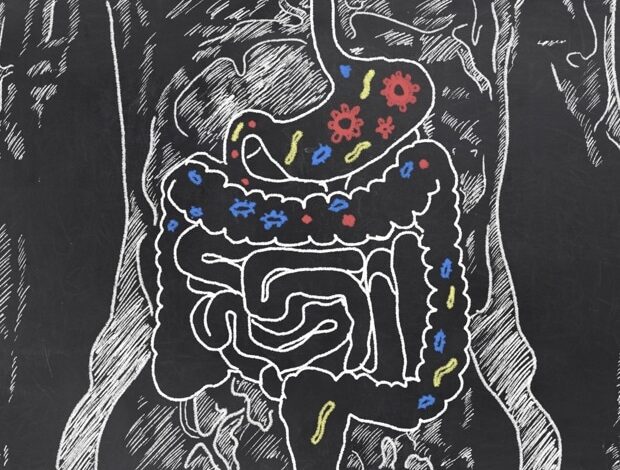New generative AI tool models the infant microbiome

The gut microbiome has a profound impact on the health and development of infants. Research shows that dysbiosis-;or imbalances in the microbial community-;is associated with gastrointestinal diseases and neurodevelopmental deficits. Understanding how gut bacteria interact, and how these interactions may lead to some of these problems, however, is difficult and time consuming through traditional laboratory experiments.
Researchers at the University of Chicago have developed a new generative artificial intelligence (AI) tool that models the infant microbiome. This “digital twin” of the infant microbiome creates a virtual model that predicts the changing dynamics of microbial species in the gut, and how they change as the infant develops. Using data from fecal samples collected from preterm infants in the neonatal intensive care unit (NICU), researchers used the model, called Q-net, to predict which babies were at risk for cognitive deficits with 76% accuracy.
“You can only get so far by looking at snapshots of the microbiome and seeing the different levels of how many bacteria are there, because in a preterm infant, the microbiome is constantly changing and maturing,” said Ishanu Chattopadhyay, PhD, Assistant Professor of Medicine and senior author of the new study, published in Science Advances. “So, we developed a new approach using generative AI to build a digital twin of the system that models the interactions of the bacteria as they change.”
Just like other forms of AI, the digital twin concept is a potentially transformative technology, bridging the fields of computer science, engineering, mathematics, and life sciences to replicate the behavior of biological systems. In the case of microbiome dynamics, Chattopadhyay says it’s a matter of scale. Typical wet lab experiments that test the interactions of bacteria are time consuming. Testing all the two-way interactions of a typical colony with 1,000 species would take more than 1,000 years-;not to mention that more complex interactions of three, four, or more species are common.
The Q-net model drastically speeds up the time of testing out these interactions, highlighting those that may be of interest for links to a particular outcome. Chattopadhyay and his colleagues trained the model using fecal sample data from infants at UChicago’s Comer Children’s Hospital. Next, they validated its predictions about how the microbiome would develop using sample data from Beth Israel Deaconess Medical Center in Boston. The model predicted which babies were at risk for cognitive deficits, as measured by head circumference growth, with 76% accuracy.
The model also indicated that interventions like restoring the abundance of a particular bacterial species could reduce the developmental risk of about 45% of the babies. The authors caution, however, that the model also showed that incorrect interventions can make the risk worse.
You can’t just give probiotics and hope that the developmental risk is going to go down. What you are supplanting is important, and for many subjects, you also have to time it precisely.”
Ishanu Chattopadhyay, PhD, Assistant Professor of Medicine and senior author of the new study
Since Q-net can identify potentially interesting combinations of bacteria, it vastly narrows the search for potential treatment targets. If the gut microbiome is the proverbial haystack, Q-net can give researchers the one-inch squares where they can find the needles.
Chattopadhyay’s research partners, like co-author Erika Claud, MD, Professor of Pediatrics and Director of the Center for the Science of Early Trajectories are working with bioreactors that simulate the live gut microbiome environment where they can test out potential interventions and see what happens.
At its core, Q-net models large numbers of variables that interact with each other, so Chattopadhyay believes it can be used for other systems beyond the microbiome, such as the evolution of viruses, or even social phenomena like public opinions.
“If you have a large amount of data, you can train this system well and it will figure out what the connections are,” he said. “It can capture very subtle differences, so it has a really large number of applications.”
The study, “A Digital Twin of the Infant Microbiome to Predict Neurodevelopmental Deficits,” was supported by the National Institutes of Health (grants P30DK042086 and R01HD105234). Additional authors include Nicholas Sizemore, Kaitlyn Oliphant, and Ruolin Zheng from the University of Chicago, and Camilia R. Martin from Weill Cornell Medicine.
Source:
Journal reference:
Sizemore, N., et al. (2024) A digital twin of the infant microbiome to predict neurodevelopmental deficits. Science Advances. doi.org/10.1126/sciadv.adj0400.



